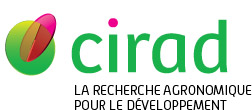dos Santos Luciano Ana Cláudia, Picoli Michelle Cristina Araújo, Vieira Rocha Jansle, Garbellini Duft Daniel, Camargo Lamparelli Rubens Augusto, Lima Verde Leal Manoel Regis, Le Maire Guerric. 2019. A generalized space-time OBIA classification scheme to map sugarcane areas at regional scale, using Landsat images time-series and the random forest algorithm. International Journal of Applied Earth Observation and Geoinformation, 80 : 127-136.
|
Version publiée
- Anglais
Accès réservé aux personnels Cirad Utilisation soumise à autorisation de l'auteur ou du Cirad. 2019Luciano_JAGsugarcaneSP.pdf Télécharger (11MB) | Demander une copie |
Résumé : The monitoring of sugarcane areas is important for sustainable planning and management of the sugarcane industry in Brazil. We developed an operational Object-Based Image Analysis (OBIA) classification scheme, with generalized space-time classifier, for mapping sugarcane areas at the regional scale in São Paulo State (SP). Binary random forest (RF) classification models were calibrated using multi-temporal data from Landsat images, at 10 sites located across SP. Space and time generalization were tested and compared for three approaches: a local calibration and application; a cross-site spatial generalization test with the RF model calibrated on a site and applied on other sites; and a unique space–time classifier calibrated with all sites together on years 2009–2014 and applied to the entire SP region on 2015. The local RF models Dice Coefficient (DC) accuracies at sites 1 to 8 were between 0.83 and 0.92 with an average of 0.89. The cross-site classification accuracy showed an average DC of 0.85, and the unique RF model had a DC of 0.89 when compared with a reference map of 2015. The results demonstrated a good relationship between sugarcane prediction and the reference map for each municipality in SP, with R² = 0.99 and only 5.8% error for the total sugarcane area in SP, and compared with the area inventory from the Brazilian Institute of Geography and Statistics, with R² = 0.95 and –1% error for the total sugarcane area in SP. The final unique RF model allowed monitoring sugarcane plantations at the regional scale on independent year, with efficiency, low-cost, limited resources and a precision approximating that of a photointerpretation.
Mots-clés Agrovoc : canne à sucre, Saccharum officinarum, utilisation des terres, imagerie par satellite, Landsat, plantation, fouille de données, échantillonnage aléatoire
Mots-clés géographiques Agrovoc : Brésil
Classification Agris : U30 - Méthodes de recherche
A01 - Agriculture - Considérations générales
Champ stratégique Cirad : CTS 5 (2019-) - Territoires
Agences de financement européennes : European Commission
Programme de financement européen : FP7
Projets sur financement : (EU) Stimulating Innovation for Global Monitoring of Agriculture and its Impact on the Environment in support of GEOGLAM
Auteurs et affiliations
- dos Santos Luciano Ana Cláudia, UNICAMP (BRA) - auteur correspondant
- Picoli Michelle Cristina Araújo, UNICAMP (BRA)
- Vieira Rocha Jansle, UNICAMP (BRA)
- Garbellini Duft Daniel, Brazilian Center for Research in Energy and Materials (BRA)
- Camargo Lamparelli Rubens Augusto, UNICAMP (BRA)
- Lima Verde Leal Manoel Regis, Brazilian Center for Research in Energy and Materials (BRA)
-
Le Maire Guerric, CIRAD-PERSYST-UMR Eco&Sols (FRA)
 ORCID: 0000-0002-5227-958X
ORCID: 0000-0002-5227-958X
Source : Cirad-Agritrop (https://agritrop.cirad.fr/592792/)
[ Page générée et mise en cache le 2024-02-17 ]




